2017 – 2018 Updates
Route will not bring transit mobility to Orange County. The DOLRT light rail route will not take people to the airport or to RTP. It will instead connect urbanized centers in Durham to each other, and then enters into Orange County from East 54 and ends at UNC Hospital. Only 4 stops are within Orange County and because they are either on UNC property or Corps wetlands, they are not available for economic development. (map below). Planned at-grade rail crossings of local roads will cause safety and congestion problems.
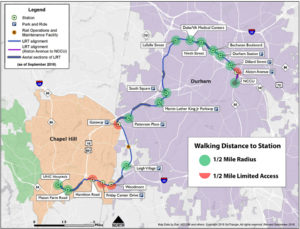
Map of proposed light rail project that serves only a tiny corner of Orange County: the developable land served by the light rail line is almost all in Durham County! Light Rail will steer investment away from Orange County, hurting our tax base and employment opportunities. Light rail funding takes away from transit funds for bus service for 15- 501 and route 86, the major transit corridors in Orange County.
May 2017, DORLT puts County in financial jeopardy. A majority of Commissioners decided to fund DOLRT despite the overwhelming evidence presented by the County’s own consultant, who testified that it was unlikely that county revenue growth could support the costs of paying the debt. You will recall that Durham and Orange Counties will together pay $800 million in loans until 2064.
The decision to continue funding this project based on the rosy assumption of 3.71% sales tax growth rate annually for the next 30 years remains highly unrealistic. Orange County manager Bonnie Hammersley is projecting only 2.4% sales tax growth for this next year and this is a booming economy! This is further evidence that the County Commission majority’s financial decision to press ahead with the light rail project places our county is fiscal jeopardy.
We believe that that GoTriangle, the regional transportation organization guiding the project, won’t receive the 25% originally counted upon from the NC Legislature. In fact, the likely outcome for the best scenario would be for the project to receive 7%, far short of the 25%. 50% Federal funding is uncertain; we will know by 2019. This project is projected to cost 2.3 Billion.
Given the realities that we face with revenue growth, State and possible Federal funding reductions and almost certain cost overruns, it is difficult to see how Orange County residents will not be on the hook for more money. Orange County is responsible for this debt and it is likely that taxpayers will be faced with additional sales and property taxes.
While there is not any requirement that funding above the 1/2 cent sales tax revenue or other specified sources of revenue be reserved for light rail, there is also no provision that prevents this or another Board of County Commissioners from using other revenue sources to support this project.
Bus Rapid Transit The transit tax we all voted for was intended for bus and light rail. As expenses and overruns continue for the light rail, less funds are available for bus service in Orange County. Bus Rapid Transit offers a cost effective technology that can serve Orange County economic centers. Chapel Hill has proactively planned for a Bus Rapid Transit (BRT) on the MLK corridor between Eubanks Rd near I-40 and Southern Village. At a Chamber of Commerce event, Brian Litchfield, Director of Chapel Hill Transit, showed in this video how this BRT system would work in Chapel Hill. Watch it here. Joe Milazo of the Regional Transit Alliance points out that BRT could be installed on many corridors, such as 15-501 and 54, at a fraction of the cost of light rail.
MAY 2018 Update
Key points:
- The project is in the engineering phase where over $100 million of local monies has been spent designing the light rail from UNC to Durham. At the same time, the project is being evaluated for state and federal funding.
- Most of the bus, bus rapid transit and other projects for the Triangle have been put on a back burner so that DOLRT could garner all the funds available from the State. That means no reverse circulator for Hillsborough, NC 54 service, and other services will be delayed or funded through property taxes (instead of the transit tax).
- DOT has indicated that the project will qualify for at most 7.5% funding from the state. That means an additional $60 million will need to come from Orange and Durham. If you recall, state funding had already been reduced from 25% to 10%,
- Commuter rail service that could have connected Hillsborough through Durham to RTP, RDU and Raleigh, has been postponed indefinitely. Transit planners are exploring the option of adding an additional county and town property tax increase to fund this important service.
- In its latest budget, Orange County has reduced its sales tax growth projections by 30% suggesting that the county will not have the projected revenue to fund the project if it goes forward.
- Federal funding (50%) is a year away. Right now it looks like it could happen but the funding can’t exceed 50% if costs go up. There are many variables that could change in the next 12 months.
- Orange County Commissioners have given little attention to the cost of operating the system if it is built. Durham has agreed to pay 80 percent to 81 percent of the operations and maintenance costs – about $26.2 million a year by 2045 – with Orange County picking up the rest, or roughly $6.2 million a year.
Read this March 2018 update from the Herald Sun
We asked Commissioner Earl McKee the status of the Durham Orange Light Rail project in early May, 2018. View the video.
It’s been a year since the County Commissioners voted to proceed with an expensive commitment to fund the Durham Orange Light Rail Transit, (DOLRT), commonly referred to as the light rail project.
APRIL 2017 Update
Despite widespread objections to the plan throughout Orange County, the County Commissioners voted 5 – 2 to move forward with the light rail plan.
Those of us in Affordable Transit for All studied the issues and did our homework. Unfortunately for all or us, a Board majority did not address the financial and structural deficiencies that had been raised by their own consultant as well as hundreds of citizens.
Orange County Commissioners Earl McKee and Renee Price deserve our thanks for providing a strong voice for Orange County’s citizens. We are proud of them and believe they will be ultimately proved correct in their assessment that the Commission majority voted for a plan that does not serve the transit needs of Orange County and will cost us dearly.
We are also proud that through our efforts and others, you wrote, listened and spoke out for public transportation, social justice, and a fiscally responsible plan. Our commissioners received hundreds of personal and impassioned letters, and more than 200 people from every corner of Orange County signed the letter from Affordable Transit for All within 12 hours! Here’s the archive of emails to the commissioners – they are inspiring! Read the letter that summarizes the deficiencies in the plan with over 200 signatures.
The most immediate price for this ill-advised decision is that Chapel Hill taxpayers spend more of their town budget on bus service. The two drivers in this increased burden for the taxpayer are: (1) the minimal support for additional bus service specified in the agreements just approved by the County Commission, and (2) the diminishing federal support for local transit. We need look no further that the Town budget just presented by Chapel Hill Town Manager Stancil to the Town Council which will require more tax payer support for Chapel Hill Transit. Read news article here.
What’s next?
- The Federal Transportation Administration (FTA) will receive and evaluate the Durham-Orange Light Rail proposal over the next 30-60 days. During that time, the FTA will decide whether or not GoTriangle can proceed with spending $70 million of local funds for the engineering phase of the project.
- In 2018, the project might or might not receive up to 10% of state funding. According to Assistant County Manager Travis Myren, the light rail project plan would be difficult to implement lacking state support.
- The FTA will not decide whether to fund the project until 2020. If they fail to do so, Orange and Durham Counties are out the $100 million spent. That federal decision could be influenced by many factors including the ones reported in this article. Here’s that report.
We anticipate many more discussions about the future of transit as the process unfolds. Affordable Transit for All is committed to continue to advocate for a rational transit plan for our county residents and businesses.
Thank you for your support!
_______________________________________________________________________
May 26, 2017 In a tweet, Commissioner Marcoplos directed a question to CHALT. He asked:
WHY THE DURHAM-ORANGE LIGHT RAIL PROPOSAL WON’T WORK FOR ORANGE COUNTY
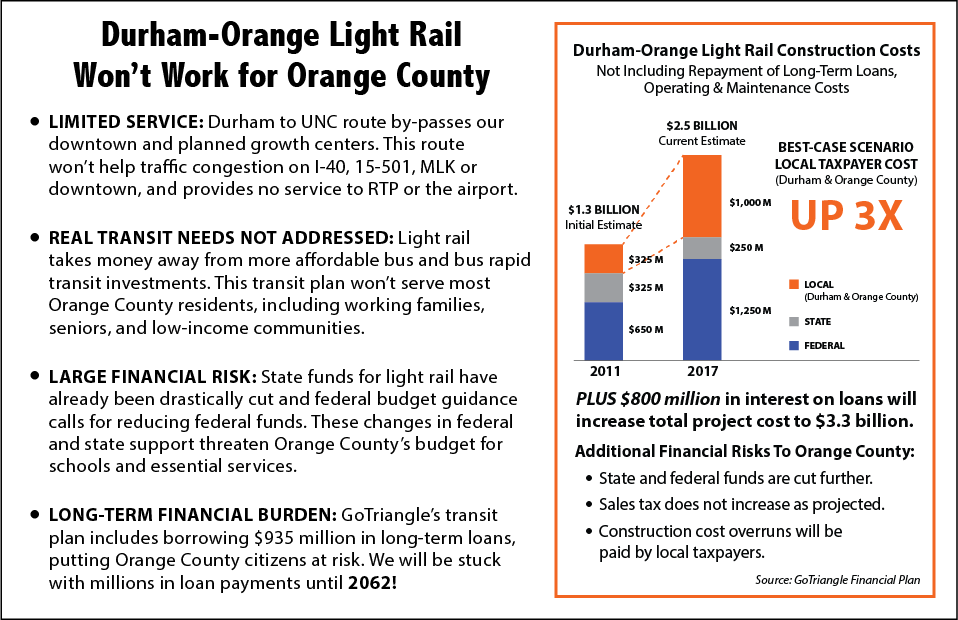
April 27, 2017 Update. Today the County Commissioners vote on the Transit Plan. We’ve written the Commissioners a letter summarizing our comments on the latest plans. 4.27.letter.commissioners
April 21 Update. The updated transit plan adds nearly $2 billion for the light rail project between UNC and Durham but does not add needed funds for bus service or bus rapid transit. As a result, bus hours have been cut by over 20% and the planned Bus Rapid Transit system from Eubanks to Southern Village along MLK, Columbia and 15-501 is not adequately funded and may not get built. The current trnait plan adds nearly a billion dollars in debt and over $900 million in interest to build the project, and most recently additional debt in order to maintain the light rail service.
If the Commissioners were to adopt the current proposal, they will assume that Orange County’s sales taxes will grow uninterrupted by recession at 3-6% every year for the next 45 years. Yet the county’s consultant has told the commissioners that the plan is very, very risky for Orange County. If there’s an overage due to construction costs or interest rates, or if there’s a funding shortfall in sales tax, then the county will need make up the difference, most likely via the general fund (which is used for schools and essential services). The current estimated portion of project cost for Orange County is about $300 million.
April 20th Orange County work session. The Commissioners discussed the controversial Orange County Transit Plan, which has been updated to include commuter rail service between Durham and Wake County. They were presented with new scenarios that reduce the Orange County contribution and increase Durham’s with resulting favorable cash balances for Orange County – but mostly improves cash because GoTriangle is planning to borrow even more money in another area and a private consortium has offered (but not committed) to provide additional funding via land donations – most of which has been added to Orange County’s side of the ledger. Read Tammy Grubb’s article here.
The commissioners found it easy to be pleased that the numbers that worked, but surprisingly they didn’t ask any questions about the dubious tax revenue assumptions or construction cost assumptions that remain improbable.
There was some discussion about a possible award of federal funds when GoTriangle reported that neither Durham or GoTriangle would agree to give Orange County an exit strategy in case of a short fall in sales tax revenue or a change in service that didn’t work for the county. Commissioners are open to alternative contract language – but “as long as it doesn’t interfere with the project moving forward”.
The risks haven’t really changed – but on paper there is now a project scenario that looks good to the commissioners politically. It’s important to notice that in the work session the commissioners did not openly discussed likely scenarios where the sales taxes don’t grow as expected.
If you recall, the Board specifically requested on April 4th that the Consultant run a scenario using the more realistic forecast (intentionally labeled) “Moodys Pessimistic”. That has not happened yet! The graph below illustrates this scenario and shows what will happen to Orange County cash reserves using these more realistic assumptions. This is not good news for Orange County because even the Moodys Pessimistic forecast is well above Orange County’s historical sales tax growth rate from 1996 to 2016.
So far we are sticking with Barry Jacob’s call for the Board to sign an agreement that will protect the County from undue risk. It is yet to be determined if he will insist on it.
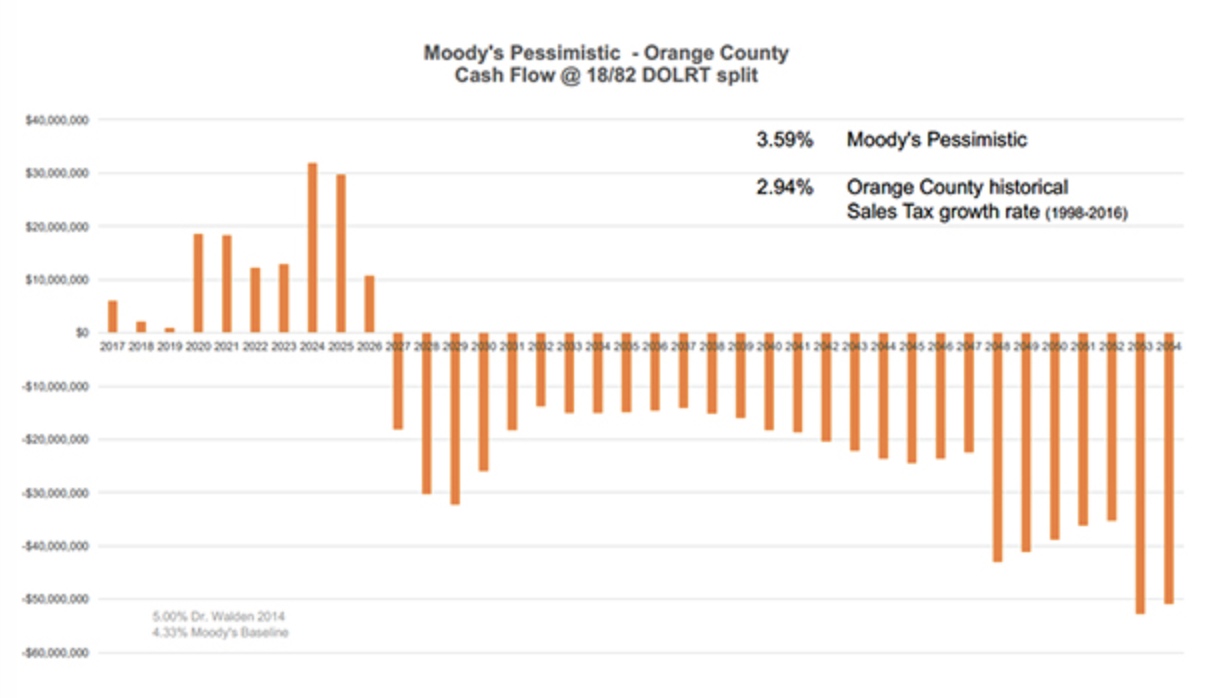
If Moody’s more pessimistic assumptions are used, Orange County will not have enough transit tax revenue to cover commitments.
April 18th Orange County public hearing. This commission discussion followed a jam packed public hearing (video link). Slightly more that half the public statements opposed the light rail. (The County archive contains additional comments and the majority runs strongly opposed to the rail project.) Many of the critical comments at the public hearing focused on the concern about the 3.3 billion dollar price tag. GoTriangle has had to resort to risky long term borrowing to try to make the project feasible. The counties will have to repay $1.25 billion of this debt with no state or federal help, including about $900 million in interest alone. These debt payments will consume Orange County our transit funds until 2062.
On April 27, the Orange County Commissioners will decide whether to commit to funding the Durham Orange Light Rail Transit (DOLRT). Here are the risks to this plan:
- County taxpayers will be committed to a $935 Million dollar debt for 45 years to pay for the Durham Orange Light Rail.
- Light Rail will serve few Orange County residents leaving working families, seniors and low-income communities without access to transportation.
- Orange County bears the financial risk disproportionally on Orange County because there are few development opportunities for Orange County development and the plan consumes the entire transit tax for the next 40 years.
- Downturns in the economy or misses in optimistic assumptions will have a deleterious effect on County funds for schools and affordable housing.
- Almost all of the dedicated 1/2 cent sales transit tax monies will go to paying for light rail and long-term and short-term debt so other needed public transit will not be implemented.
A majority voted for a special designated transit tax in 2012 because transit is important to Orange County residents. We want the best value for the tax money we are raising each year.
Contact Commissioners: Send your email to this one address: ocbocc@orangecountync.gov
THERE ARE BETTER ALTERNATIVES
Instead of a single light rail corridor that largely misses our county, we can serve the transit needs of the entire county in more practical ways by spending our transit money on expanded bus service. More frequent bus service throughout the county would support the Bus Rapid Transit (BRT) running electric buses on busy corridors in the urban areas.
We are residents and taxpayers of Orange County who want Affordable Transit that will address existing traffic congestion and future needs.
PUBLIC TRANSPORTATION IS CRITICAL
The official map says it all – the proposed light rail goes around our county and enters along 54 to connect with UNC Health, the only apparent beneficiary of this plan. There are only four stops in Orange County, three located on UNC property. To understand the route of the proposed Orange County Transit Plan check out these links.
- GoTriangle Durham Orange Light Rail Flyover
- Zoom in map of proposed rail project route in Chapel Hill
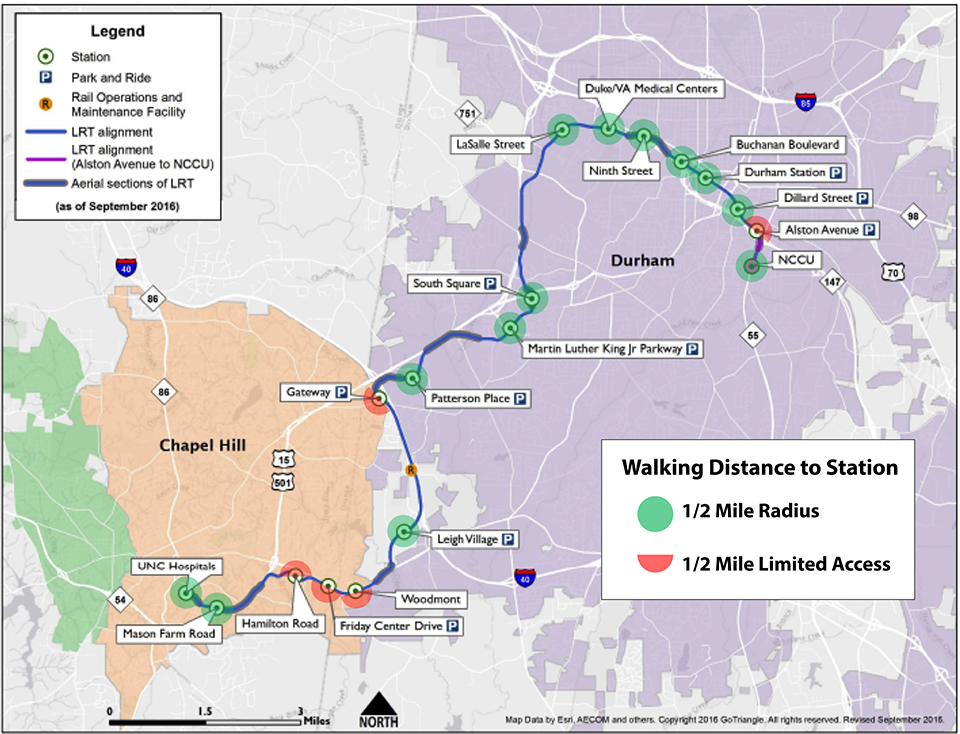
About Us: When GoTriangle announced the new 2.5 billion dollar pricetag (in future dollars) for the Durham-Orange Light Rail Transit, not including interest on the debt, leaders from Smart Transit Future, Orange County Voice and Chapel Hill Alliance for a Livable Town (representing thousands of local residents) formed a collaborative effort to educate citizens about the costs and utility of the Orange County Transit plan.

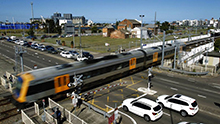
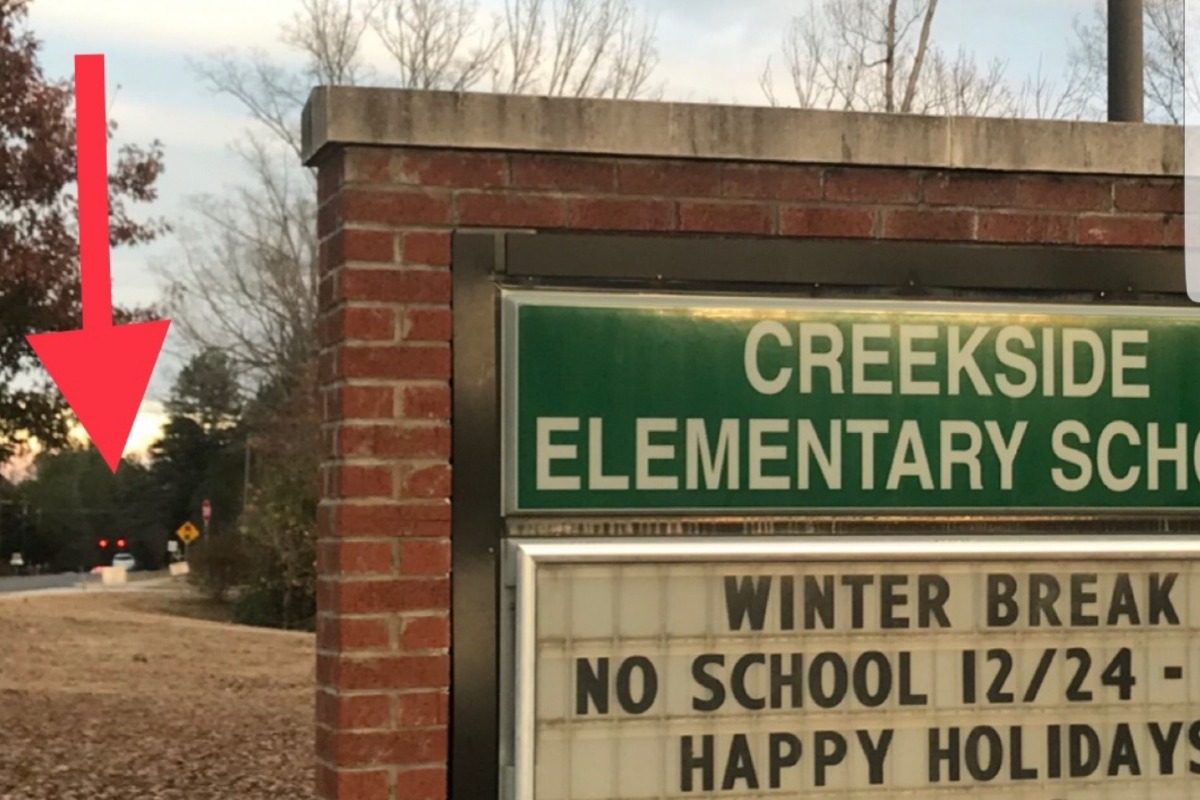


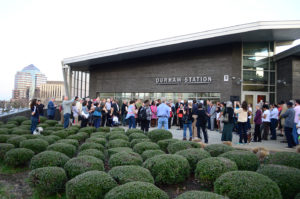
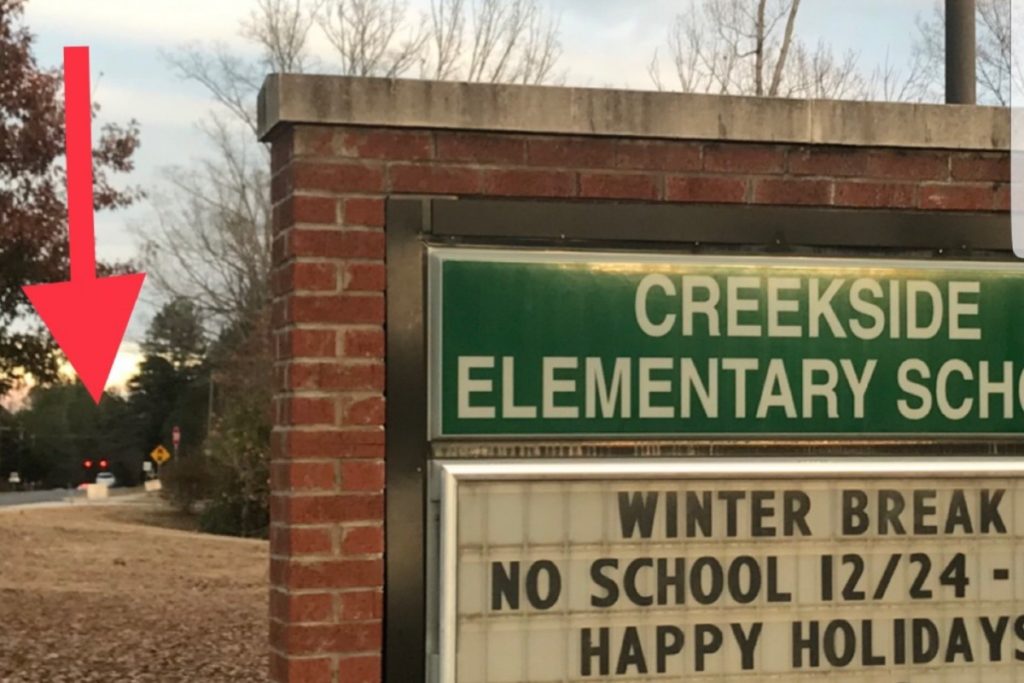




Follow Us